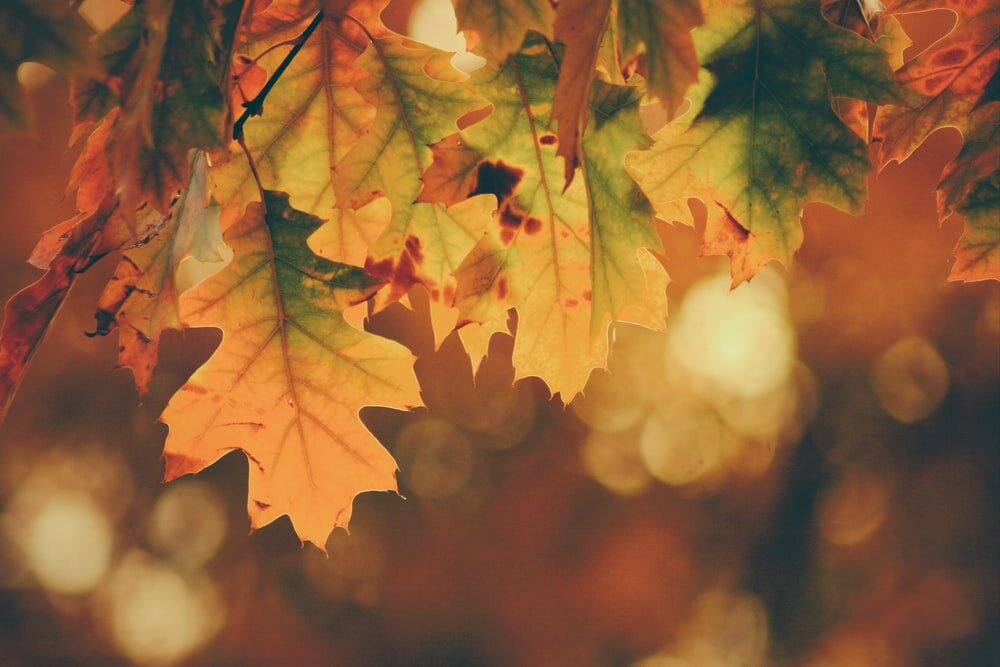The joys of seasonal eating | Part 4: | Fall | so much more than pumpkin spice!
This is part four of a four-part series on seasonal eating. To learn the basics of what seasonal eating is in Chinese medicine, and learn about winter foods, check out part one. If you want to learn about spring eating, check out part two. Part three covers summer and late summer, which are considered two separate seasons in Chinese medicine. And now, let’s talk about how to nourish your Qi as the fall arrives!
First, let’s look at what your Qi does in the fall.
Autumn is my favourite season. I absolutely love the coolness in the air, the colourful leaves, and the traditional foods that are often associated with this season, such as pumpkin, butternut squash and apples.
It’s interesting to me how different people resonate with different seasons. Patients often tell me what their favourite seasons are. Personally, I know how hard the summer humidity is on my constitution (and HAIR!), while some patients love the heat and wish it would get even hotter!
Now that we are getting closer to the start of the fall season, I have begun to see more patients with lung issues such as fall allergies, colds and coughing, as well as others seeking treatment to assist them through a grieving process or a letting-go process.
The fall season is associated with the element of metal and with the lungs and large intestine. The related taste is pungent and the emotions associated with these organs are grief and sadness, as well as attachment. Fall is a time to start slowing down, reflecting, being more introspective, and planning for the winter. This is the time to switch from the more expansive spirit of summer (travels, staying up late) to a more contractive time, conducive to staying home, sleeping in and going inward. In the same way that people spend time canning foods to build up stores for the coming cold season, fall is when we need to stock up our energy.
Out with the old, in with the new!
Fall is the perfect time to let go of those things which no longer serve us. This frees up any stagnant mental and emotional space to embrace feelings of clarity, relaxation, release, focus, happiness and flow. Be sure to take the time to work through unresolved emotions; if you don’t, they can express themselves as grief and negative self-image, leading to an imbalance of the lungs and large intestine. Take advantage of the fall’s energy to let old wounds heal. Forgiveness allows us to release what we’re holding onto, whether that means forgiving others or forgiving ourselves.
Here are a few other ways to let go this season:
1. Breathe. Wind is a key element in the fall. Focus on deep belly breathing techniques to help you become more aware of what needs to be released.
2. Purge. This will be unique to each individual, but if nothing else, take the time to purge your closets of unused clothing. Not only will it free up space, but those clothes will be deeply appreciated by those who need them this winter.
3. Give. This goes hand in hand with purging and resolving old hurts. Give away what you no longer need, and give yourself the gift of release and freedom that comes from forgiving yourself and others. I find so much joy when I get rid of something I no longer use and drop it off at my local shelter… even more so when I grab a few things from my husband’s closet, too!
4. Sleep. If you think about it, the act of sleeping is the ultimate way of letting go. Thanks to a special type of lymphatic system in the brain called the glymphatic system, sleep facilitates the cleansing and organization of your brain. To keep things simple, aim to go to bed an hour earlier, or, if your schedule allows, wake up an hour later.
Fall foods should build you up for winter.
The appropriate foods for fall are yang, and encourage the Qi to expand and move outward. Foods are best cooked by sautéing and baking; cook things for a longer period of time over low heat, and make sure to add some wonderfully scented spices (think applesauce with cinnamon). Fall is attached to pungent flavours and is a great time for fermented foods, which help the body’s mucosa to stay moist and warm, which prevents infection and chest congestion.
Here are some tasty things to add into your diet:
pumpkin
radishes
sauerkraut
sweet potatoes
squash
turnips
vinegar
walnuts
warm spices: anise, black pepper, cardamom, cinnamon, cloves, ginger, nutmeg, turmeric
winter squash
yogurt
apples
cabbage
cauliflower
chestnuts
chickpeas
grapes
kefir
kombucha
lentils
olives
onions
peaches
pears
pickles
Be sure to avoid foods that create coolness and dampness, such as cold milk, cucumbers, watermelon, cold drinks, raw foods (including salads), bread and sugar. Bring on the soups and stews!
A note about pumpkin spice
People like to eyeroll about how pumpkin spice is everywhere in the fall, and it’s true that some pumpkin spice ideas are pretty gross. (Pumpkin spice flavoured cheese? Pumpkin spice sausage? Pumpkin spice hummus? Eewwww.) But the essence of pumpkin spice is deeply traditional and very much in line with the season’s recommended eating. There’s a reason we all love warming spices as the weather turns cooler... they’re really good for us! Skip the excessively sweet lattes, but do consider adding warm spices to your diet in the form of teas, spiced baked apples, seasonings for your meat and so forth. Your Qi will love you for it.
That concludes our seasonal eating tour!
If you follow these general tips, you’ll help keep your Qi in harmony with the world around you all year long. With so many delicious foods to choose from, you’ll look forward to every new season and the tasty meals it brings!
xo

